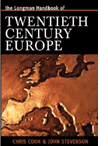Reviews:
Reporter World provides a variety of safety equipment, identification products, specialized high-visibility clothing, pertinent news, product reviews, book reviews and useful links specifically for reporters, writers, assignment editors, news correspondents, journalists, ENG crews, photographers, production staff, directors, segment producers, media security personnel, and freelancers: in short, anyone who is part of the news gathering, information reporting, or documentary film industries.
In this section we review various products and services of relevance to reporters, writers, correspondents, ENG teams and production staff. These products include cameras and accessories; computer hardware and software; scanners; printers; books and other products. Smaller, mini-reviews, are also available in other sections of this site including Products, Books and Movies.
We are constantly adding additional reviews to this section. If you have any suggestions for other products you would like us to review, simply e-mail us using the feedback address on our Terms of Service page. Please supply us with as much information as you can about the product (including name, manufacturer, model number) or book (including title, author, ISBN and publisher).
 Title: The Longman Handbook of Twentieth Century Europe Title: The Longman Handbook of Twentieth Century Europe
Author: Chris Cook and John Stevenson
Copyright: © 2003
Publisher: Longman, an imprint of Pearson Educational
ISBN: 0-582-23508-1
Relevance: The Longman Handbook of Twentieth Century Europe is ideal for any reporter, writer or correspondent needing to know the background of various disputes, battles, wars, and economic situations within Europe. The book is divided into seven basic sections encompassing the entire point-form historical definition of this region.
Review: The Longman Handbook of Twentieth Century Europe is a reference work designed for students, teachers and others who wish to know the full chronological and historical facts of the foundations of modern day Europe. Covering the entire period from Tsarist Russia and Imperial Germany to the Balkan wars of the 1990s until the Copenhagen Summit of 2002, the book provides a convenient and easy to use reference source of key facts and figures for Europe.
The background to the First World War from 1882 to 1914, and of course, a full chronology of the First World War starts off the book. Hundreds of useful facts and numbers are included throughout the book, for example, a small table numerates the manpower and casualties (killed or wounded) of all the serving armies in Europe for World War I.
Versailles, the League of Nations and other diplomatic agreements are also enumerated in a point form manner. The Russian Revolution complete with its necessary Tsarist Russian background, the Revolution itself and post-Revolution Soviet Russia are also full outlined. Fascist Italy, including its historical background, the rise of fascism, and Italy under Mussolini are also included. Germany's Weimar Republic and the inevitable build-up towards Nazi Germany and World War II are also covered.
The book nimbly switches from country to country and from time period to time period based on common themes such as wars or international agreements. A full chronology of the Second World War takes pages to outline and is further supplemented by another table outlining the manpower and casualties of the major European nations from 1939 to 1945.
Reporters doing update pieces on the Holocaust and by extension, what the Holocaust has meant to worldwide Jewry, will be interested in the book's outlining of the Germany policy towards Jews in the early 1930s and its inevitable horrendous conclusion.
One of the most startling tables in the book illustrates original Jewish populations of most countries within Europe before the war and after it. One of the unconventional things illustrated is the calculation of the percentage of Jews who survived Nazi Germany's murderous rampage. Although all reporters know full well the overall statistics involved, the book brings home the unmistakable conclusion that a worldwide war on the Jewish religion had occurred. For example, Twentieth Century Europe reports that the pre-war Jewish population of Poland was 3,300,000; the number of killed was estimated to be 3 million. Thus, the book's calculation of 10% of Jews that survived Nazi rule.
The reconstruction of Western Europe after the war is also well illustrated and deals with the period from 1945 all the way up to September 2000. Individual countries such as Germany, Italy, Spain, Portugal are all handled likewise.
Reporters and writers looking for background information concerning the Cold War, Eastern Europe and the Soviet Bloc will also be pleased at the amount of information contained -- again in point form within the book. Similarly, the period of European decolonization outlines how the various European world powers such as Britain, the Netherlands, Portugal, France, Belgium and Spain slowly but methodically were forced to withdraw their presence (and their influence) over far-flung regions of the globe. Although certainly not complete nor particularly well detailed, it does give researchers and those yearning for a deeper understanding of why countries "pulled out" of these regions a graphic explanation.
Another interesting section is titled Revolution and Reconstruction. Here, we see how Russia has developed since 1985, illustrated by successive Russian leaders and each leader inadvertently helped the breakup of the former Soviet Union. This section and a subsequent one dealing with Eastern Europe since 1985, as well as the disintegration of the former Yugoslavia gives a helpful roadmap to understand what issues face citizens of that region today. Since much of this region plays host to some of the world's most dangerous places for reporters today, the book provides necessary background to keep safe and able to file their next story.
The road to the European Union which the book positions as starting in 1946 with Winston Churchill's famous speech in Zurich all the way to the December 2002 Copenhagen Summit to admit ten new members of the Union in May 2004, finishes up this helpful first section of the book.
Section Two deals with the nations' rulers and ministers of countries within Europe. From Albania to Yugoslavia, presidents, emperors, prime ministers, dictators, sovereigns, chancellors, kings, and popes are all enumerated with their dates of ascendancy and descendency.
The War Years
Section Three deals with European wars, diplomacy and international organizations. The book outlines key wars and campaigns such as the Russo-Japanese War (1904 - 1905); the Italo-Turkish War (1911 - 1912); the Balkans Wars (1912 - 1913); the First World War (1914 - 1918); the Russian Civil War (1917 - 1920); the Hungarian-Romanian War (1919); the Greek-Turkish War (1920 - 1923); the Italo-Abyssinian War (1935 - 1936); the Spanish Civil War (1936 - 1939); the Second World War (1939 - 1945); the Russo-Finnish War (1939 - 1940); the Cold War; the Greek Civil War (1944 - 1949); the Berlin Blockade (1948 - 1949); the Korean War (1950 - 1953); the East German Workers' Uprising (1953); the Polish Workers' Uprising (1956); the Hungarian Uprising (1956); the Suez Invasion (1956); the Soviet Invasion of Czechoslovakia (1968); the Partition of Cyprus (1974); the Soviet Invasion of Afghanistan (1979 - 1989); the Collapse of the Soviet Union (1988 - 1991); the Romanian Revolution and Civil War (1989); the Yugoslavian Civil War (1991 to 1995); the Russia-Chechnya War (1994 - 1996, and 1999 - ); and the Balkan War (1999).
Reviewing all these wars (and the associated carnage) underscores the sad truth that war correspondents and photographers will always have a job cataloging human atrocities. Wars of decolonization, key European treaties and alliances, diplomatic agreements, and principal international organizations are also all cataloged in this section.
Section Four deals with the social and economic history of various European countries and crams as many statistics, facts and factoids into the book as possible. The book for instance, compares population of major European countries in 50 year increments from 1850 through to 2000. It also illustrates the amazing growth of population in over 35 major cities, emigration from Europe, wheat output, coal and lignite, cotton consumption, steel output, crude oil and motor vehicles produced, electrical output, railway mileage and value of external trade. Clearly, this compendium is neither complete nor in-depth, but it does serve to provide a hugely beneficial overview of the general facts, political, economic and social situations within the countries covered.
Major events in European religious history are also covered, as is the emancipation of women and social welfare progress. An interesting section for writers and historical analysts is the book's Biography section in which brief biographies are given on over 250 important leaders or other notables within European history. From Konrad Adenauer, a German statesman and Mayor of Cologne, to Gregori Zinoviev, the Russian Bolshevik leader, dozens of biographies appear.
Yet another useful section of the book concerns a detailed glossary of terms. This section -- which covers over 60 pages in the book -- defines terms such as Abwehr (the espionage, counter-espionage, and sabotage service of the German High Command in the Second World War) to Zionism (the belief in the need to establish an autonomous Jewish homeland in Palestine). Hundreds of other terms are also defined and noted.
Perhaps one of the most helpful sections in the book in terms of reporters trying to understand the ebb and flow of certain countries and regions within the European umbrella can be found in the Maps section. Here, the ever-changing geographical boundaries, frontiers and war-fronts are illustrated graphically and show the startling historical changes that have occurred within the last 100 years.
Overall:
The Longman Handbook of Twentieth Century Europe provides an impressive amount of historical detail and other information pertaining to 20th century Europe. It outlines the key themes including the First World War, Nazi Germany, the Holocaust, Stalin's Russia, the Second World War and Rise of the European Union.
The book also contains many biographies on historical figures who have made their mark (for good or for bad) on the face of European society. Reporters will also appreciate the sections chronicling the famous wars, diplomacies and international organizations, as well as the treaties and international agreements made during the last century. Highly recommended for any reporter, writer or news correspondent stationed or covering the European theater.
End of Review
Have your say.
You can give us your feedback by visiting our Terms of Service page.
Buy this book.
If you wish to buy this book right now, please click here.
Read other reviews.
If you wish to return to the Reviews page, please click here.
|
|
|





